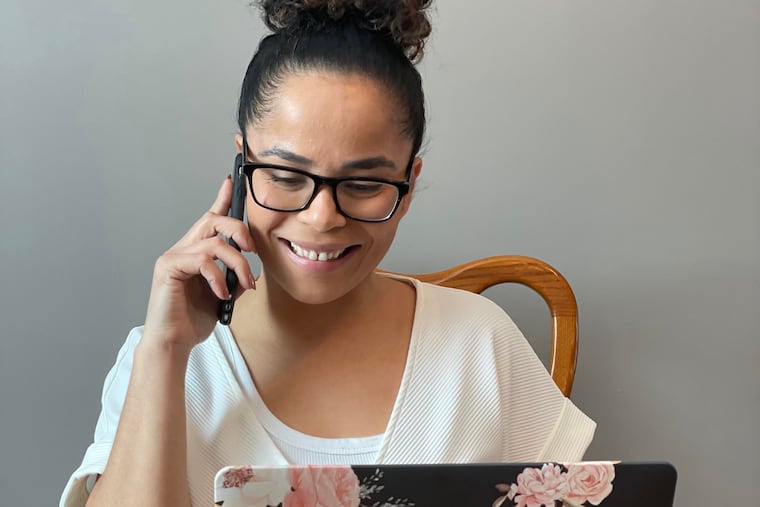3 ways teachers can address their students’ trauma when school is virtual | Opinion
With the pandemic and ongoing racial tensions, students are experiencing higher levels of stress than in previous years, and their emotional well-being must be a focus for teachers.

In classrooms across the U.S. — virtual or in-person — teachers are faced with an enormous challenge: foster the academic learning process while also addressing the social-emotional needs of students during a highly traumatic period in history. With the continued pandemic and racial tensions, students are experiencing higher levels of stress than in previous years, and their emotional well-being undoubtedly influences their ability to focus and engage in their learning. As a longtime educator, I have realized that effective teaching relies on my knowledge of how to address the many forms of trauma my students experience outside of the classroom as much as within the school.
In Camden, where I have the privilege of teaching, nearly 37% of residents live below the poverty level, and the pandemic has exacerbated the area’s food insecurity, leaving more than 60,000 local residents without a stable source for nourishment — more than 17,200 of those being children. How are students supposed to focus on learning when their stomachs are grumbling for a meal?
Become an expert on the community where you teach
Other trauma barriers exist, such as language and family experiences. Half of the area’s population is Hispanic/Latinx, and many of them have experienced hardships in immigrating to the U.S. Many of my students struggle being distanced from their extended family and friends, adjusting to a new culture and a completely different educational system than they had in their native countries. My students are smart and incredibly strong, and they often do not get enough credit for their resilience. Nonetheless, these experiences do take a toll on their ability to thrive in their learning environment, and, as their teacher, it is my responsibility to ensure these traumas do not become long-term barriers to learning.
» READ MORE: CDC gives new road map for schools without requiring schools to reopen
Embed real talk into all professional development and meetings
Trauma-informed teaching is at the heart of what my colleagues and I do each day as we work with our students. In our professional development, we discuss candidly and respectfully the challenges our students face and our own limitations in understanding what our students experience. Our conversations dive into sensitive topics like examining the influence of racism, poverty, peer victimization, violence, and bullying on students in our schools. We know that serving our students means we have to constantly strive for greater empathy in our views and practices as educators.
Unpack ideas of what you think trauma looks like
One of the lessons I’ve taken away in my career is that understanding cultural differences is key to making sure I, as an educator, work with students and parents in a way that meets them where they are and what they expect. It’s not about me. It’s about them. I teach a large population of Guatemalan students, whose cultural norms at home are very different than what many U.S. families are used to. I’ve had to adopt new practices in working with parents and set new expectations and protocols for myself in how to communicate and support these families. I’ve also had to adjust the way I teach.
Recently, I asked my students to write stories that addressed their own emotions. For many of my students, articulating their feelings became a challenge. It was clear to me that many were trying to describe their heightened anxiety over the pandemic, but their descriptions were more cryptic. Others struggled to address their concern and heartache over their separation from family, leaving out their specific fears. When students are vague or unclear, it often is a sign of trauma.
» READ MORE: South Jersey teen is the youngest girl to create a New York Times crossword puzzle
I want to create a safe environment for my students to share their lives and, at the same time, support their academic development. Social-emotional learning is equally important to academic learning, as together they foster the critical characteristics and skills these students need to succeed and thrive as they grow.
If we, as educators, lean into our work with an intentional focus on understanding our students’ backgrounds, their cultures, and individual experiences, we can do so much more to ensure their success. In this virtual world, we must go beyond ensuring that they are logged on and make sure they understand they have an adult they can trust in their lives. We must create in our instruction opportunities for them to address their trauma in a productive way that also builds their academic skills.
Instituting trauma-informed learning practices that are also culturally competent will help ensure our students get through this challenging time and are prepared for whatever obstacles their lives hold in the future.
Crystal Peralta is a sixth-grade ELA teacher in her eighth year teaching at KIPP Whittier Middle School in Camden. She attended New Jersey City University, where she completed an undergraduate teaching degree, and has a master’s degree from Liberty University.